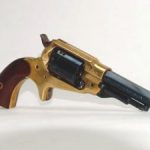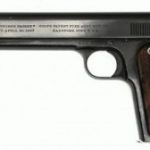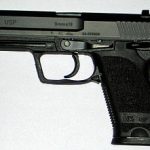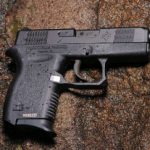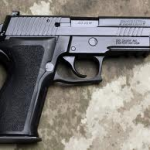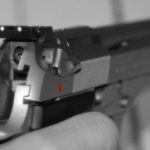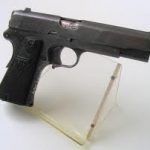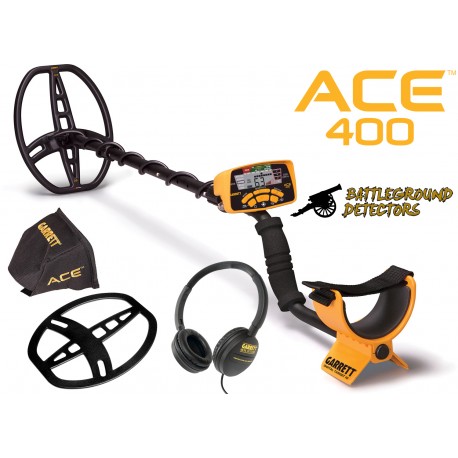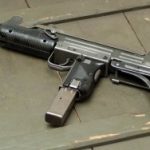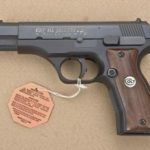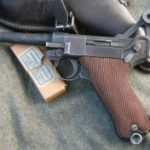Remington New Army.
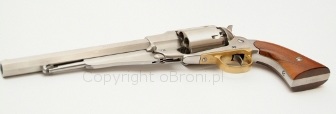
Po sukcesie rewolwerów Colta, a między innymi wprowadzonego do służby w wojsku Unii w roku 1851 Colta Navy, Remington postanowił zapożyczyć i rozwinąć dalej koncepcję Samuela Colta.
W roku 1858 został opracowany przez firmę E. Remington & Sons prototyp rewolweru New Model Army. (Tak dla ścisłości, to nazwy New Army zaczęto używać po wprowadzeniu modelu do produkcji seryjnej – czyt. dalej) Jako pierwszy rewolwer na świecie posiadał zamknięty szkielet, co okazało się być dobrym i bardziej niezawodnym pomysłem niż otwarty szkielet Colta.
W New Army łatwiej było również wyjąć bęben, co umożliwiało np. szybką wymianę pustego bębna na nowy naładowany. Wystarczyło odpiąć dźwigienkę pobojczyka/praski do dociskania kul, odciągnąć oś bębna w stronę wylotu lufy, pomanipulować kurkiem i delikatnie wyciągnąć bęben. Na korzyść Remingtona przemawiają również piny zabezpieczające (wycięcia do pozostawiania opuszczonego kurka – w Colcie zostawiało się jedną komorę pustą dla bezpieczeństwa) umieszczone pomiędzy kominkami, oraz „stała” szczerbinka, która w Colcie pojawia się nam dopiero po odciągnięciu kurka. Co do celności, to bywało z tym różnie i różnie bywa nadal. Zależy to głównie od wykonania i fachowego tuningu (jeśli taki jest potrzebny) konkretnej sztuki, zamknięty szkielet nie jest wykładnią celności, choć faktycznie to moim zdaniem dobre rozwiązanie.
Proces ładowania jest oczywiście podobny jak w Coltach. Ze względu na łatwe wyjmowanie bębenka można również użyć zewnętrznej praski do ładowania, po czym włożyć bęben ponownie.
W wersji rozdzielnego ładowania rewolwer ten może strzelać ołowianą nadkalibrową kulą kalibru 0,454 cala, oraz paroma rodzajami pocisków, jak choćby popularny REAL. Jest ładowany granulowanym prochem czarnym odmierzanym równo, tak samo dla każdej komory w bębnie, w celu uzyskania powtarzalnych wyników na tarczy. Często rozdziela się proch od pocisku filcową przybitką, albo drobną kaszą manną, która jest też wypełniaczem – dzięki temu nie trzeba sypać prochu do pełna, a kula znajduje się tuż przy ujściu komory bębna. Ze względów bezpieczeństwa, po załadowaniu komór zasmarowuje się je smarem co zapobiega zjawisku odpalania kilku ładunków jednocześnie. Na koniec – na stanowisku strzeleckim zakłada się kapiszony nr. 11 (w zależności od kominków, czasami nr. 10) używając przyrządu zwanego kapiszonownikiem, albo po prostu – ręcznie.
W wersji z konwersją na amunicję scaloną (naboje), używa się amunicji .45 Long Colt, która w przeciwieństwie do kapiszonowej wersji wymaga już pozwolenia.
Rewolwer ten jest bronią single action, a więc przed każdym strzałem należy ociągnąć kurek.
Kurek na pierwszej pozycji – broń zabezpieczona, możliwy obrót bębna – np. w celu ładowania, kurek na drugiej pozycji – komora w bębnie osiowo ustawiona do przewodu lufy, bęben zablokowany, broń gotowa do strzału. Pobojczyk dźwigniowy to rzecz jasna przyrząd do ładowania zintegrowany z rewolwerem (jak w Coltach, oczywiście nie wszystkich), Odświeżono jednak jego kształt względem Navy 1851, dodając typową dla Remingtonów
„płetwę”, którą bym raczej zaliczył pod walory estetyczne niż użytkowe, choć nadaje broni bardziej opływowy kształt i dzięki temu przynajmniej po części wyeliminowano zaczepianie pobojczykiem o brzegi kabury.
Produkcję seryjną tego rewolweru zaczęto w 1862 roku, a zakończono w 1875. W tamtych czasach bardzo chwalono „Remika” za niezawodność, piny zabezpieczające i taktyczną wymianę bębna, co na polu bitwy było sporą pomocą dla strzelca. Przy odrobinie wprawy, mając kilka zapasowych, wcześniej naładowanych bębnów można uzyskać szybkostrzelność porównywalną do rewolwerów na amunicję scaloną.
Niżej przedstawiamy kilka zdjęć współczesnej repliki Remingtona ’58 w wersji ze stali nierdzewnej.
